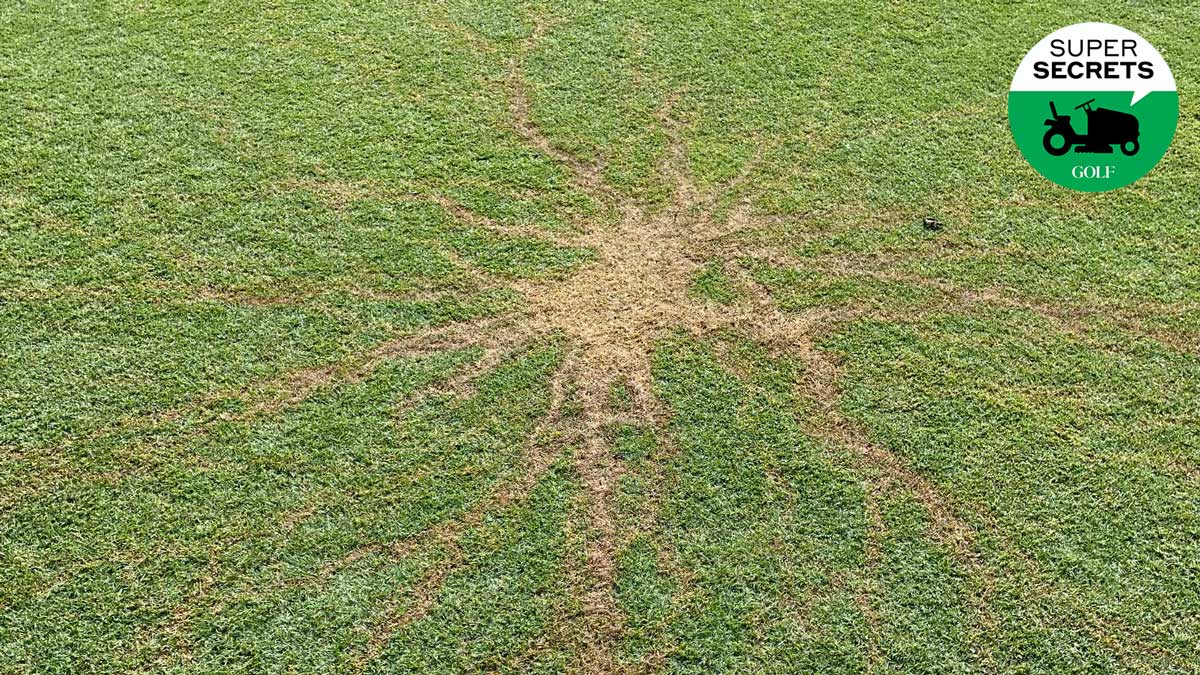
Earlier this year, the West course at the Breakers Ocean course took a direct lightning hit.
courtesy Mark Reid
In the event of a lightning storm over a golf course, it has been suggested that you stand on one leg and hold a one-iron aloft because — haha — not even God can hit that club.
This is a terrible idea.
A smarter option is to seek shelter immediately in an enclosed structure. If you’re stuck outside, try to move toward a low-lying area, such as a dry ravine or valley. Avoid trees, flagpoles and other tall objects. Stay away from golf clubs and maintenance equipment (and anything made of metal), steer clear of water, and, if you’re wearing old-school spikes, remove them.
According to the National Weather Service, golf carts do not offer safe refuge, but “enclosed motor vehicles can provide shelter as long as patrons do not touch the metal framework.”
Mark Reid is familiar with these guidelines. As director of golf and grounds at Breakers Ocean Golf Club, in Palm Beach, Fla., and a longtime member of the Golf Course Superintendents Association of America, he has seen his share of bolts from above. This year alone, lightning has taken out a handful of trees at the Breakers. In January, the 14th fairway of the club’s West course took a direct hit, leaving a scar that would make Harry Potter proud.
When unruly weather threatens, Reid’s first priority is the safety of players and personnel. But property needs to be protected, too. Here’s a look at the precautionary measures Reid and other supers take.
Storm watching
Superintendents are part-time meteorologists, with one eye trained on the forecast. Doppler radar in the pro shop helps them keep watch. But for a crew chief on the go, nothing beats a weather app. Reid’s choice is Weather Bug, which he says includes reliable lighting alerts.
Sounding the alarm
Quiet on the tee! Except when lightning is in the area. The Breakers has a cluster of cacophonous sirens that sound whenever lightning is within a seven-mile radius. Everyone is required to clear the course, and no one is allowed back out until there are no strikes within 30 minutes of the club. No exceptions.
Safeguarding infrastructure
After the safety of patrons and employees, Reid’s top concern is infrastructure, especially the separate irrigation systems on his two courses. Each runs differently (one is controlled by satellite; the other is linked directly to individual sprinkler heads). But both are safeguarded in the same way, with grounding and surge protection that guard against the boxes getting blown out.
Tending to trees
Replacing mature trees can be expensive and complex (the root systems of the pines that are prevalent in Florida make them especially tricky), so when those trees are central to how a course plays, superintendents take special measures to protect them by installing camouflaged grounding systems, which absorb lightning strikes. Reid does not have those systems on his trees, but he takes close inventory after a storm passes.
When a tree is struck by lightning, the trunk might crack. Or a jolt of energy might shoot from its top, creating the frazzled look of a cartoon character who put a finger in a socket. Then again, Reid says, there might not be any obvious signs at all. “Sometimes, it can take a month or so before you start to see the decline.”
If those ailing trees pose a risk to people, they are treated like all trees in such condition: They are either trimmed appropriately or removed.









